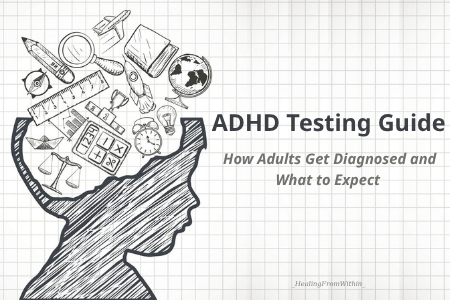
What Are the Most Common Symptoms of ADHD?
Understanding the core ADHD symptoms is the first step toward identifying whether you or someone you care about may be experiencing this condition. These symptoms often show up in ways that are easy to overlook or misinterpret, especially in adults.
Inattention vs. Hyperactivity
ADHD symptoms often fall into two categories: inattention and hyperactivity-impulsivity. Adults may experience chronic disorganization, forgetfulness, and difficulty sustaining attention. Inattention may show up as frequent daydreaming, missing important details, or failing to finish tasks. On the other hand, hyperactivity in adults may appear as inner restlessness, trouble relaxing, or a constant sense of urgency. Unlike children, who may physically fidget, adults often experience a mental version of hyperactivity—racing thoughts and impulsive speech.
Overlapping behaviors in adults
Many adults report ADHD symptoms such as procrastination, mental fatigue, and impulsive decision-making, which are frequently mistaken for general stress or anxiety. For example, an adult may constantly switch between tasks, struggle with meeting deadlines, or become overwhelmed by routine responsibilities. These patterns of behavior can interfere with work, relationships, and personal goals. When left undiagnosed, adults with ADHD often develop compensatory habits that only partially mask their symptoms, such as over-scheduling or perfectionism. Recognizing these patterns is crucial to moving toward proper assessment and support.
ADHD Symptoms in Women vs. Men
Gender can significantly influence how ADHD symptoms present and how quickly they are diagnosed. Women are often underdiagnosed or misdiagnosed due to the more subtle, internalized nature of their symptoms.
Masked symptoms and misdiagnosis in women
Women with ADHD tend to mask their symptoms through social adaptation or by overcompensating in academic and professional settings. They might be labeled as “scatterbrained” or “emotional” rather than being recognized as struggling with executive dysfunction. This often results in misdiagnoses such as anxiety or depression. The emotional cost of this misinterpretation can be substantial, leading to feelings of inadequacy or failure. Many women only discover they have ADHD in adulthood, often after a child is diagnosed.
Emotional dysregulation in females
Emotional dysregulation is a common yet overlooked symptom among females with ADHD. Women may experience rapid mood changes, heightened emotional sensitivity, and difficulty managing frustration. This can lead to impulsive reactions, overreactions to minor events, and persistent feelings of guilt or shame. Unlike mood disorders, which have more consistent patterns, the emotional shifts in ADHD are often situational and reactive. Recognizing this pattern can be a key indicator in distinguishing ADHD from other conditions.
Subtle Signs of ADHD You Might Be Missing
While some ADHD symptoms are obvious, others are more nuanced and can easily go unnoticed. These subtle signs are often what delay diagnosis until adulthood.
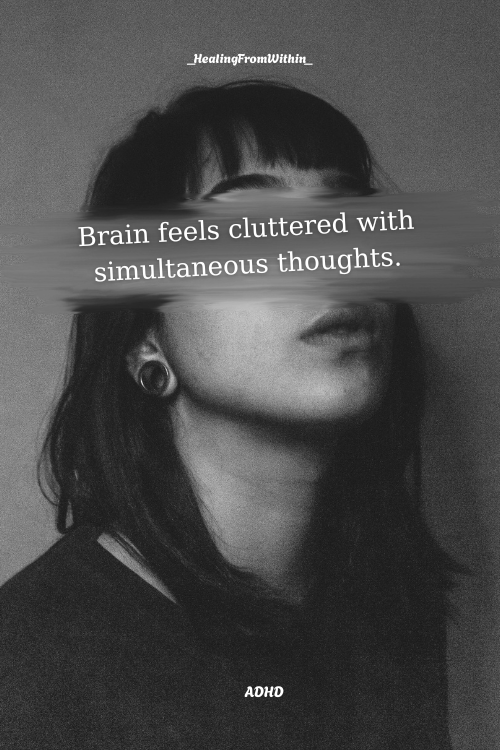
Executive dysfunction
Executive dysfunction refers to difficulties with planning, prioritizing, time management, and goal-setting—core functions impaired in individuals with ADHD. An adult with executive dysfunction may struggle to initiate tasks, jump from one unfinished project to another, or rely heavily on external reminders to manage basic responsibilities. This can affect job performance, academic success, and even relationships. The person may feel lazy or incompetent when in fact they’re dealing with a neurological impairment. Understanding this underlying cause is empowering and validating.
Hyperfocus and time blindness
Though ADHD is associated with distractibility, hyperfocus is a lesser-known symptom where a person becomes intensely absorbed in an activity, losing track of time and surroundings. This can result in skipping meals, missing appointments, or spending hours on a hobby or task without realizing it. Time blindness—another related issue—makes it difficult for individuals to estimate how long something will take or how much time has passed. These traits often conflict with societal expectations of punctuality and time management, leading to chronic stress and misunderstandings.
Rejection sensitivity
Rejection Sensitivity Dysphoria (RSD) is an intense emotional response to perceived criticism or rejection, even when no harm is intended. Adults with ADHD may take feedback very personally, avoid confrontation, or feel devastated by a simple correction. This can make professional settings and relationships more challenging. They might avoid pursuing opportunities out of fear of judgment or failure. Recognizing RSD as a symptom of ADHD helps reduce shame and opens the door to better emotional coping strategies.
ADHD Assessment for Adults: Step-by-Step Breakdown
Receiving a diagnosis of ADHD as an adult can be life-changing. The process of assessment is more than a simple test; it’s a comprehensive evaluation of behavior patterns, history, and daily functioning.
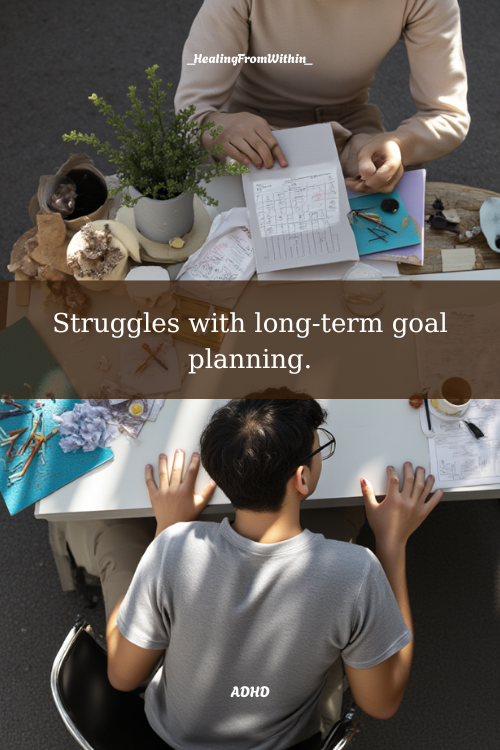
Clinical interviews and symptom checklists
The first step in adult ADHD testing usually involves a clinical interview conducted by a psychologist, psychiatrist, or other mental health professional. These interviews include questions about your current struggles, past academic or work performance, and family history. In addition to the conversation, clinicians often use symptom checklists to quantify the presence and severity of ADHD symptoms. These checklists help ensure that the diagnostic process is thorough and based on clinical standards.
Tools used: ASRS, DIVA‑5, WURS
Several standardized tools are commonly used in adult ADHD assessment. The ASRS (Adult ADHD Self-Report Scale) is a brief screener endorsed by the World Health Organization. DIVA-5 (Diagnostic Interview for ADHD in Adults) provides a structured clinical interview framework. The WURS (Wender Utah Rating Scale) helps identify childhood symptoms that may have persisted into adulthood. These tools, when used together, paint a detailed picture of how ADHD has impacted various areas of life.
Self-assessment vs professional diagnosis
While online tests and quizzes can offer valuable insight, they are not sufficient for diagnosis. A self-assessment can act as a starting point for conversation with a healthcare provider, but professional evaluation is necessary to rule out other conditions, assess comorbidities, and determine the appropriate treatment plan. It’s important not to self-diagnose based solely on internet tools.
What ADHD Testing Near You Might Look Like
Finding local testing options can be overwhelming, but understanding what to expect can ease anxiety. The process typically involves multiple steps and may vary depending on the provider.
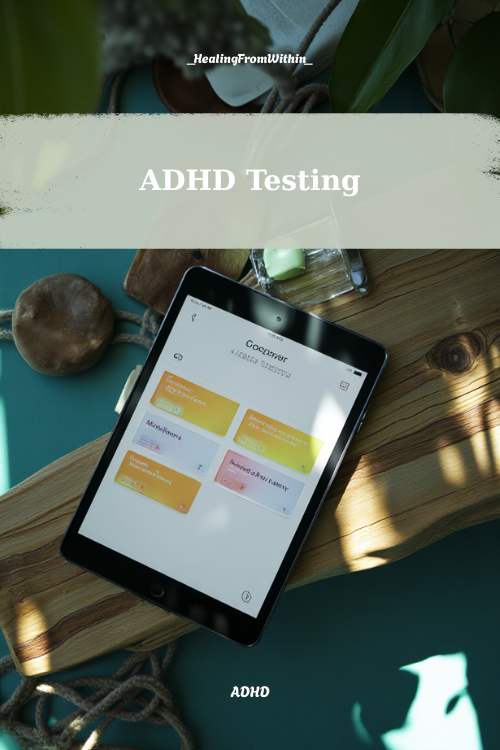
What to expect in your first visit
During your first appointment, you can expect a thorough intake interview, which might include questions about your daily routine, work habits, sleep patterns, and emotional health. The provider may also ask you to fill out forms or bring someone who knows you well for additional input. Cognitive tests or rating scales may be included to assess attention, memory, and problem-solving. The goal is to get a full picture of your mental functioning, not just check off a list of symptoms.
ADHD doctors vs specialists vs therapists
Psychiatrists are medical doctors who can diagnose ADHD and prescribe medications. Psychologists typically focus on assessment and therapy but may work in tandem with psychiatrists for a full care plan. Therapists, including licensed clinical social workers or counselors, often provide behavioral interventions, coaching, or emotional support after diagnosis. Depending on your needs, you may work with more than one type of provider.
How to find testing centers nearby
Search engines and online directories are good starting points. Use keywords like “ADHD testing near me” or filter by location on psychology websites. You can also ask your primary care physician for referrals or check with your health insurance provider for a list of in-network specialists. Some universities and hospitals also offer affordable diagnostic services through psychology departments or clinics.
Signs of ADHD in Daily Life (With Examples)
ADHD affects nearly every aspect of daily functioning, often in ways that seem unrelated to mental health. By examining these impacts across work, relationships, and personal habits, the condition becomes more visible.
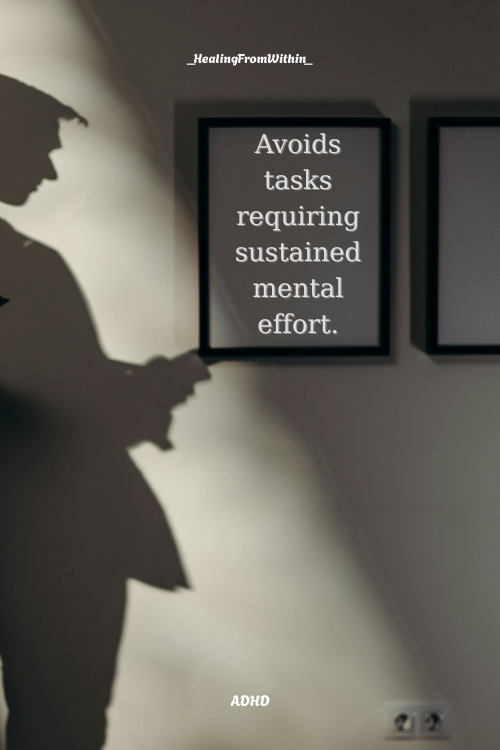
In the workplace
Adults with ADHD may struggle to meet deadlines, forget instructions, or become overwhelmed by complex projects. They might excel in creativity or problem-solving but fail to deliver consistent performance. Frequent job changes or burnout can also be indicators. Understanding how ADHD symptoms interfere with productivity can help individuals seek accommodations or support.
In relationships
Interpersonal issues often arise when individuals with ADHD interrupt conversations, miss social cues, or fail to follow through on commitments. Partners or friends may misinterpret this as inconsiderate or unreliable behavior. Conflict may stem from emotional outbursts or chronic forgetfulness. Open communication and education about ADHD can greatly improve relationship dynamics.
In self-care and routines
Maintaining regular habits like eating, sleeping, or hygiene can be difficult for adults with ADHD. They may skip meals unintentionally, stay up too late, or abandon tasks midway. This inconsistency can affect both physical and mental health. Establishing external systems—like alarms, checklists, or accountability partners—can provide needed structure.
How ADHD Symptoms Overlap With Anxiety and Depression
Misdiagnosis is common because ADHD, anxiety, and depression share several symptoms. Understanding how they differ—and how they co-occur—is key to accurate treatment.
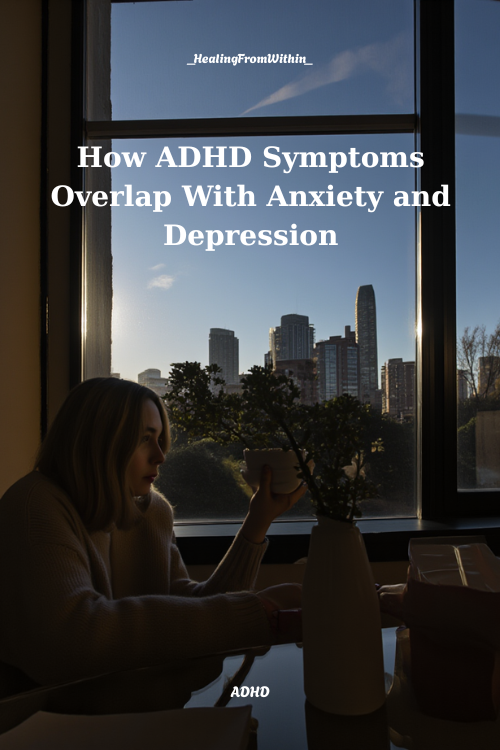
Differential diagnosis challenges
Restlessness, poor concentration, and emotional distress are hallmark features of all three conditions. However, the underlying causes differ. For example, an anxious person may struggle with focus due to worry, while a person with ADHD might struggle due to distractibility. A thorough diagnostic evaluation helps tease apart these distinctions and ensures that treatments address the root issue.
Comorbid conditions
It’s estimated that up to 80% of adults with ADHD have at least one other mental health condition. Depression can develop from years of feeling “not good enough,” while anxiety may stem from past failures or fear of future ones. Treating both ADHD and comorbidities requires a coordinated approach involving therapy, medication, and lifestyle changes.
How Untreated ADHD Affects Adults Long-Term
Leaving ADHD unaddressed can have far-reaching effects. Many adults suffer needlessly because they’ve never been properly diagnosed or treated.
Financial issues
Impulsive spending, missed payments, and disorganized budgeting are common financial struggles among adults with ADHD. These challenges may lead to debt, poor credit, or difficulty saving for long-term goals. Without intervention, the financial stress can accumulate and affect other areas of life.
Low self-esteem and chronic stress
Repeated failures at work, school, or in relationships can erode self-confidence. Adults with undiagnosed ADHD often internalize their difficulties, believing they are lazy or incompetent. This can lead to chronic stress, which worsens mental and physical health over time. A diagnosis can provide relief and a new framework for self-understanding.
Treatment Options After Diagnosis
Fortunately, ADHD is highly treatable. The right combination of strategies can significantly improve quality of life.
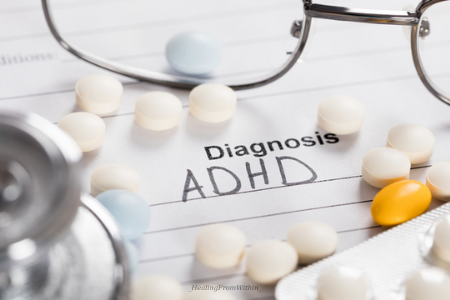
Stimulant vs non-stimulant medications
Stimulant medications like Adderall, Ritalin, or Vyvanse are often the first-line treatment. They work by increasing dopamine and norepinephrine in the brain, improving attention and impulse control. Non-stimulants like Strattera or Intuniv are alternatives for those who don’t respond well to stimulants. Medication plans should always be personalized and monitored by a healthcare professional.
CBT and organizational coaching
Cognitive Behavioral Therapy (CBT) can help address negative thought patterns and teach coping strategies. ADHD coaching focuses on building structure, improving time management, and reducing overwhelm. Together, these interventions address both the emotional and executive functioning challenges of ADHD.
Lifestyle adaptations that work
Regular exercise, sleep hygiene, mindfulness practices, and digital planning tools can all support symptom management. Creating routines, breaking tasks into smaller steps, and using visual reminders are practical methods for daily success. Small changes can lead to big improvements in functioning and well-being.
Finding ADHD Doctors and Specialists Near You
Connecting with the right professional is essential for accurate diagnosis and effective treatment. Here’s how to find someone qualified.
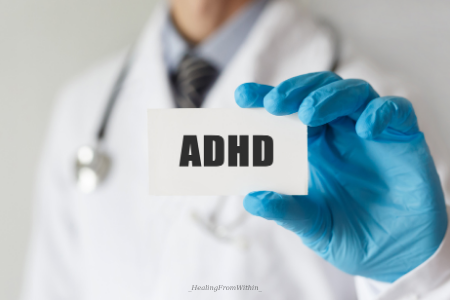
Questions to ask before choosing a provider
Ask about their experience with adult ADHD, their diagnostic methods, and whether they offer follow-up care. Inquire if they use standardized tools or collaborate with other specialists. Comfort, clarity, and credentials all matter in building a supportive care relationship.
Online vs in-person options
Telehealth has made ADHD testing more accessible, especially for those in rural areas or with limited mobility. Many online providers now offer full diagnostic assessments, medication management, and therapy. In-person care may offer deeper evaluations but can take longer to access. Choose what works best for your lifestyle and needs.
Insurance and cost considerations
Verify what services are covered by your health plan and ask for cost estimates upfront. Some providers offer sliding scale fees or payment plans. If cost is a barrier, consider university clinics or nonprofit mental health centers that provide low-cost assessments.
Final Thoughts
Recognizing and addressing ADHD symptoms in adulthood can be a transformative step toward a more focused, fulfilling life. Whether you’re seeking clarity for yourself or someone you love, understanding the signs and pursuing a proper diagnosis is a powerful move forward. If you found this guide helpful, be sure to follow our journey on Pinterest for daily insights and tools, and explore our curated ADHD resources and journals on Amazon to support your ongoing growth.

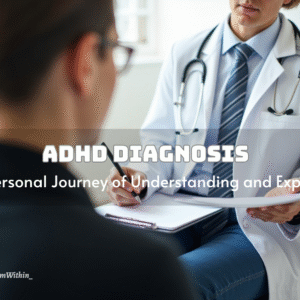
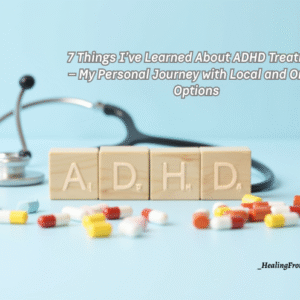
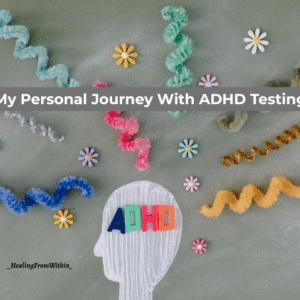
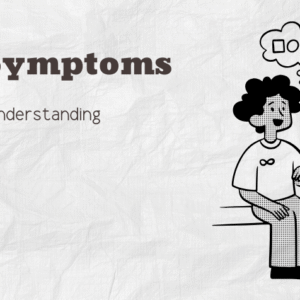
4 thoughts on “ADHD Testing Guide | How Adults Get Diagnosed and What to Expect”